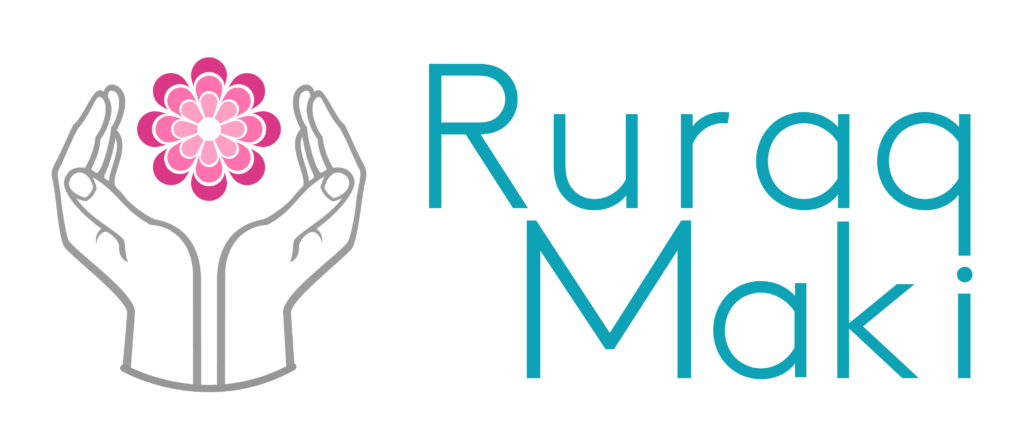
Printing on paper
Today we started out silkscreening class (serigrafía in Spanish, my new favorite word) with our guest instructor, Ana, from Lima! The women have been eager for this class, largely because it is so different than anything we have done before and there are a lot of practical applications for the technique (more on this later).
We arrived at the prison carting 2 suitcases and a backpack full of materials for the class. It looked like we were moving in! I’ve never taken this much material into the prison and, although I had permission for everything in the suitcase, I was still a bit nervous about what the guards would say. Beside having to open the suitcases 3 times, it was smooth sailing, and we started the class right on time with everything in tow.
Ana began the class with a brief overview of the process and showed the women a t-shirt she had printed with a multi-color manta flower on it. This gave the women a sense of what they could do with the technique and elicited an excited buzz. Ana gave them a few more examples of the ways they could use silkscreening, such as for apparel, manta embroidery designs, posters, and cards. Most importantly, though, she explained how silkscreening can greatly speed up and standardize the production process for an item.
Next the women were invited to cut out basic shapes (hearts, circles, triangles, etc.) to print on paper. This would act as their stencil. Each woman had a turn printing their shapes on a piece of paper, allowing them get a feel for applying the right amount of pressure and ink. It was an exciting moment as the women watched as their shapes transformed to sold prints on the paper!

Esther shows off her stencil
Although Ana intended on keeping the first shapes simple, the women’s creativity and enthusiasm couldn’t be contained and they began drawing and cutting out more complex shapes: stars and moons, flowers, bears, decorative hearts, and lettering, such as “Te Amo”. They picked up the logic of negative and positive space quickly and there were stencils abound!
While the women took turns printing, I walked around and asked them how they liked the techniques. They all loved it and told me their ideas for how they would use it. For example, one women said she wanted to stamp table cloths, while another mentioned using it on tshirts. Another told me that she had learned a more complicated printing techniques before she was incarcerated. She said, “This is so much better because it is more practical. You don’t machines or lots of materials to get started. It’s much easier.”
I was also thrilled to see that the three women who are planning to start a clothing business are in the class. They were excitedly chatting away, come up with ways they could incorporate silk screening into their business. Seeing the theoretical of the class translated into a concrete way to make money was wonderful.
The class concluded with a homework assignment: each woman needed to make a stencil for tomorrow with 2 color overlays. Additionally, Ana gave each of the women their own silkscreen frame, ink scrapper, plastic spatula, scissors, and double sided pencils. Now, they have everything they need to get started and tomorrow will begin printing on fabric and tshirts, as well as working with multiple colors.
Also, I’m bringing my camera to the prison tomorrow- fingers crossed that we will have photos of the process!
